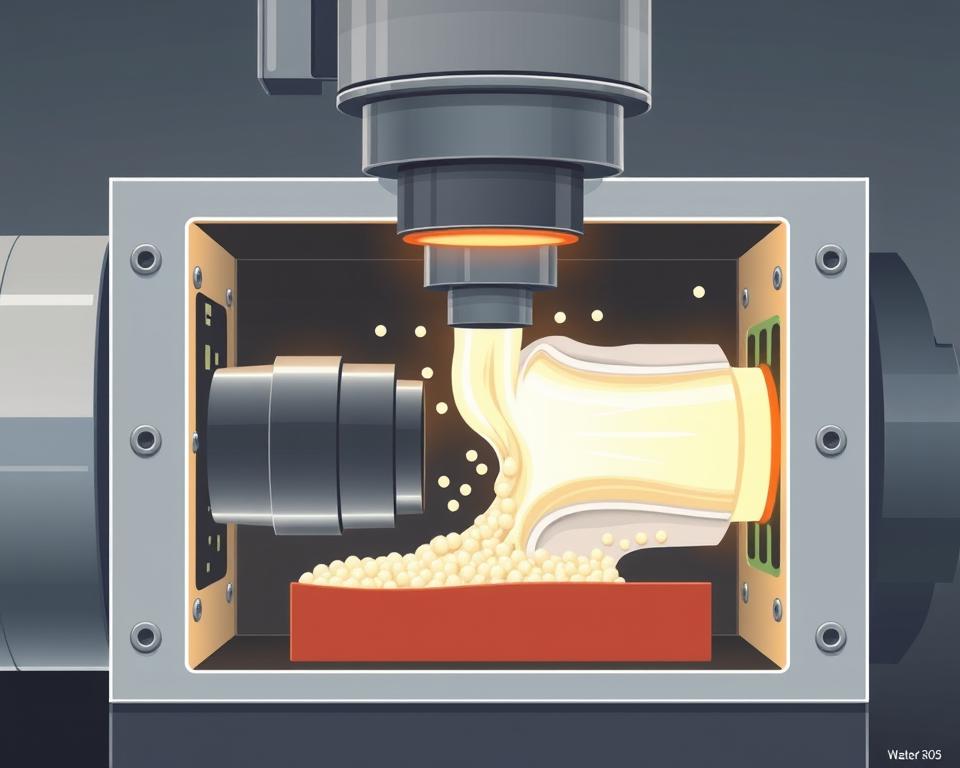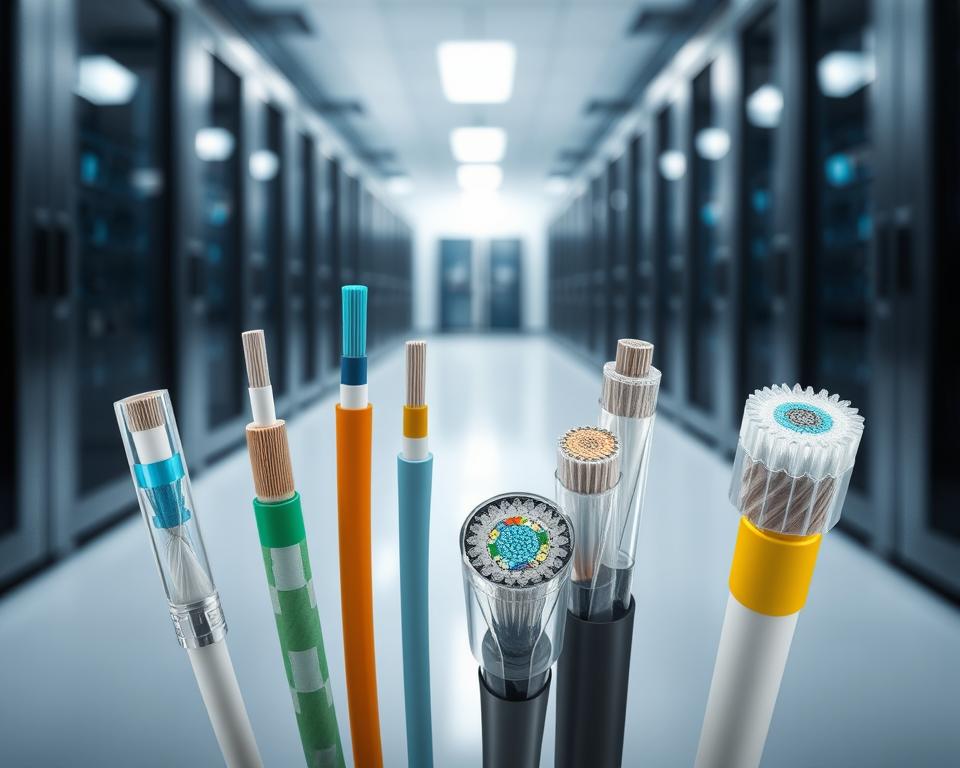The Ultimate Sustainable Precious Metal Recycling Guide
Did you know that more than $60 billion worth of precious metals are discarded each year in electronic waste alone? Such a massive amount highlights why precious metal recycling is so vital. Not only does it boost economic health, it also protects our environment. Reclaiming gold, silver, platinum, and palladium helps lower pollution and preserve what’s left of our natural resources.
Firms like Dongsheng Metal Trading spearhead the movement toward greener recycling. They ensure these valuable metals are reused, not dumped in landfills. Such a precious metals recycling companies model drives eco-friendly recycling and sustainable methods.
Essential Summaries
- Each year, e-waste discards over $60 billion in precious metals.
- Precious metal recycling reduces environmental impact and conserves resources.
- Valuable metals include gold, silver, platinum, and palladium.
- Eco-friendly recycling practices are vital for sustainable development.
- Companies like Dongsheng Metal Trading specialize in metal recycling.
Exploring Precious Metals and Their Worth
Rare metallic elements known as precious metals attract both investors and manufacturers. Gold, silver, platinum, and palladium are prime examples, known for their unique properties. They offer conductivity, resist corrosion, and occur in limited supply. Given the resource-intensive mining and processing, recycling precious metals is essential.

Market demand and each metal’s properties drive its value. Recycling precious metals plays a critical role in sustaining the supply chain. It also reduces environmental impacts associated with mining activities. Advanced recycling can bring metals back to their initial quality. Such efforts save limited resources and create economic gains.
What are Precious Metals?
Unique features make precious metals ideal for many uses. Their rarity and intrinsic properties are foundational to their economic significance. Notable examples are:
- Au: Prized for its shine and tarnish-proof nature.
- Ag: Recognized for its versatility and high conductivity.
- Pt: Esteemed for its toughness and catalyst role.
- Pd: On the rise in automotive and tech industries.
Reasons to Recycle Precious Metals
Recycling these metals is now key to sustainable practices. It helps conserve these finite resources and significantly reduces the ecological footprint tied to traditional mining. Consider these advantages:
- Cutting down mining-related environmental harm.
- Lower energy consumption compared to extracting new metals from the earth.
- Contribution to a circular economy by reintroducing materials into production cycles.
- Opportunity for profit by recovering valuable metals.
Impact of Recycling Precious Metals
Metal recycling brings both green and economic gains. Emphasizing benefits helps cut environmental harm. Plus, it spurs economic development and steadiness.
Green Benefits
Recycling metals yields major environmental perks. When we recover metals from e-waste and scrap, landfill volume drops. That cuts new mining needs and saves resources.
It curtails mining’s damage, like habitat loss and toxins. By prioritizing recycling, we work toward a greener tomorrow.
Economic Benefits
Financial perks of recycling are just as strong. Recycling precious metals can lower manufacturing costs. That shift enables firms to opt for recycled rather than virgin metals.
It spawns jobs in recovery plants and steadies markets as recycled-metal demand rises. Using these financial benefits, companies can improve profits. They also contribute to a greener economy.
The Precious Metal Recycling Process
The precious metal recycling process is complex, involving several stages to ensure maximum efficiency. Collection of e-waste, jewelry, and industrial scrap kicks off the process. They are sorted, decontaminated, and analyzed to gauge composition and value.
Recovery Steps
Such a methodical process ensures efficient recovery. Every phase aims to maximize precious-metal returns. Sorting separates metals by type and purity. Cleaning removes contaminants that could hinder recovery. Testing measures metal content to select proper recycling methods.
Metal Separation Techniques
High-tech methods are used to maximize metal retrieval. Thermal reduction applies intense heat to isolate metals. Melting refines and aggregates metals, while wet chemical processes are used for delicate separations. Firms such as Dongsheng Metal Trading apply these techniques to raise recovery and profits.
Which Precious Metals Are Recyclable
Recycling is vital for the environment and for recovering valuable materials. Many precious metals can be recycled, benefiting both the economy and the planet. Knowing which metals are recyclable helps individuals and firms.
Gold, Silver, and Platinum
Gold, silver, and platinum stand out among precious metals. You’ll see them in rings, currency, and industrial parts. Gold recovery is widespread because of its worth and need. Silver’s role in cameras, electronics, and solar energy makes its recycling vital.
Platinum, though less common, is valuable, mainly in catalytic converters.
E-Waste Metals
Electronics scrap contains metals ripe for recovery. Smartphones, laptops, and tablets contain rare metals like palladium and indium. Recovering such metals diminishes e-waste and yields vital materials.
Recycling these electronics metals is imperative. Industries aim to minimize waste and efficiently recycle resources.
Who Gains from Metal Recycling?
Precious metal recycling is essential for several key industries, allowing them to use valuable resources efficiently and sustainably. Electronics, which embeds metals in gadgets, gains the most. Aerospace and medical sectors also depend on these metals for critical components. Looking at their recycling practices shows green and financial gains.
Electronics Industry
Electronics spearheads recovery, given the metal content in phones and PCs. Quick device turnover spawns more electronic scrap. Thus, recycling gold, silver, and palladium efficiently becomes vital. It preserves nature and lowers mining-driven CO₂ emissions.
Companies are increasingly focusing on recycling to meet global sustainability and waste reduction goals. That change bolsters resource saving and ecosafety.
High-Tech Industries
Aerospace metal recycling is vital for the aerospace and medical industries, which rely on precious metals for critical components. Alloys prized for strength and anti-corrosion make up flight and medical components. Recycling these metals can significantly lower material costs and comply with environmental regulations.
They recognize that recycling offsets material scarcity. Plus, it boosts efficiency, cementing recycling as a sustainability strategy.
Finding Precious Metal Recycling Companies
Finding trustworthy precious metal recycling companies is key to recycling effectively. It’s wise to ask important questions to understand their operations. Knowing their pricing and processing methods can greatly affect your experience. Service comparisons help you pick the best recycler.
Key Questions for Recyclers
- Can you share your precious-metal recovery accreditations?
- What techniques do you use for each metal type?
- Which recovery percentages do you achieve for each metal?
- How do you handle pricing, and what additional fees might apply?
- Do you have client testimonials or references?
Evaluating Offers
Comparing recyclers’ offerings is crucial when choosing one. Use a table to line up these factors:
| Company Name | Recovery Rate (%) | Processing Fee ($) | Turnaround Time (Days) |
|---|---|---|---|
| Recycling Co. A | 95 | 50 | 7 |
| Recycling Co. B | 90 | 45 | 5 |
| Recycling Co. C | 92 | 55 | 10 |
By comparing recycling services, you can find the best recycler for your needs. It guarantees maximum value and compliance.
Precious Metal Recycling: Your Eco-Friendly Guide
Grasping recycler workflows is essential for metal recovery. They handle all stages, from gathering to final refining. This ensures maximum efficiency and value from metals.
Behind the Scenes of Recycling
They apply high-tech processes—testing, sorting, refining—to recover metals. First, they gather scrap from multiple origins. Afterwards, they apply refined techniques to isolate each metal. In the last stage, precious metals are refined to purity.
This process not only maximizes resource recovery but also supports eco-friendly practices. It’s fundamental to building a sustainable future.
Selecting Your Ideal Recycler
When picking a recycler, several factors are important. First, look at their environmental practices. Now more than ever, green commitment is crucial. Also, examine if they handle everything or only certain stages.
Pricing is another key factor. Request estimates from multiple firms. Firms such as Dongsheng Metal Trading tailor services to each sector. They are a reliable choice for specific recycling needs.
The Role of Metal Recycling Facilities
Metal recycling is a critical sector for sustainable practices and waste management. There are specialized centers for different metals and materials. Awareness of facility types guides you to proper recyclers. It aids companies and conserves nature.
Recycling Center Types
Facilities differ greatly in their focus and processes. Certain centers specialize in high-value metals; others take general scrap. Here are a few common types:
- Metal Scrap Yards: Typically focus on general metal waste, including ferrous and non-ferrous metals.
- High-value metal recyclers provide precision recovery for gold, silver, platinum, etc.
- E-Waste Recycling Centers: Specialize in recovering metals from discarded electronics, capitalizing on the valuable components often found in these devices.
Location and Access to Facilities
Proximity to recyclers cuts logistical hurdles. Companies should evaluate haulage considerations. Here are some factors that influence access:
| Factor | Description |
|---|---|
| Proximity | Nearby recyclers reduce haul time and expense. |
| Partnerships | Having established relationships with local recyclers can enhance efficiency in recycling processes. |
| Service Range | Understanding the specific services of metal recycling facilities helps businesses select appropriate partners. |
Choosing appropriate centers and easy access drives recovery efficiency.
Recovering Metals from E-Waste
E-waste poses a major ecological challenge. Old gadgets hide valuable metals ripe for recovery. It shows why we should treat e-waste as treasure.
How Electronics Contain Precious Metals
Many electronic devices hold small amounts of precious metals like gold, silver, and palladium. You’ll find them in components such as:
- Circuit boards
- Connectors and ports
- Capacitors and resistors
- Battery terminals
Common electronics conceal recoverable metals. With recycling, we can efficiently recover and reuse them.
E-Waste Recovery Benefits
Recycling electronics protects nature and recovers resources. That cuts landfill volume and conserves resources. Key perks include:
- It minimizes environmental risks from improper disposal
- It curbs carbon footprints with sustainable recycling
- It fuels a circular economy by feeding materials back into manufacturing
Promoting e-waste recovery advances resource stewardship. It’s essential for the well-being of future generations.
Future Trends in Metal Recovery
Metal recycling is evolving, spurred by tech advances and green initiatives. As the need to conserve resources grows, major players in recycling are adapting. They are embracing new methods and processes, setting the stage for the future of recycling precious metals.
Trends in Sustainable Recycling
Modern green recycling strives to cut waste and eco-damage. Companies are shifting towards eco-friendly practices, like using biodegradable packaging and energy-efficient processes. These changes align with global sustainability objectives, pushing industries towards more responsible and planet-friendly behaviors.
Cutting-Edge Recovery Methods
Breakthroughs in recovery boost metal recycling yields. Automated sorters and hydrometallurgy ramp up yield. They boost recovery and cut environmental costs—a leap for metal recycling.
Launching a Metal Recycling Startup
Building a metal recycling enterprise calls for thorough planning and industry knowledge. Leaders should map out steps, secure compliance, and set firm roots. Key tasks include market studies and pinpointing customer segments. Securing licenses and legal compliance is crucial for long-term viability.
Business Setup Steps
To launch your recycling venture, follow these steps:
- Research the market to grasp demand and competition.
- Create a comprehensive plan with objectives and tactics.
- Invest in equipment tailored to your process needs.
- Obtain capital via loans or investors.
- Secure regulatory approvals and certifications.
- Deploy promotional plans to gain customers.
Legal Considerations and Certifications
Knowing regulatory requirements is vital for a recycling startup. Adherence to environmental regulations ensures your operation is safe and sustainable. Must-know compliance points:
- Securing business certification from relevant authorities.
- Ensuring full compliance with disposal and recycling laws.
- Certifying employee knowledge of safety and handling rules.
In Closing
Recycling metals saves resources and boosts ecological well-being. It allows individuals and businesses to lessen waste’s impact on our planet. Recovered metals curb mining and fuel green-job growth in recycling.
Metal recovery delivers both eco and economic upsides. Working with Dongsheng Metal Trading guarantees green standards. Such alliances reinforce the circular economy for all stakeholders.
A sustainable tomorrow hinges on our joint metal-recycling efforts. Increased awareness builds a culture of green consumption and care. Embracing these steps helps today and protects tomorrow’s world.


